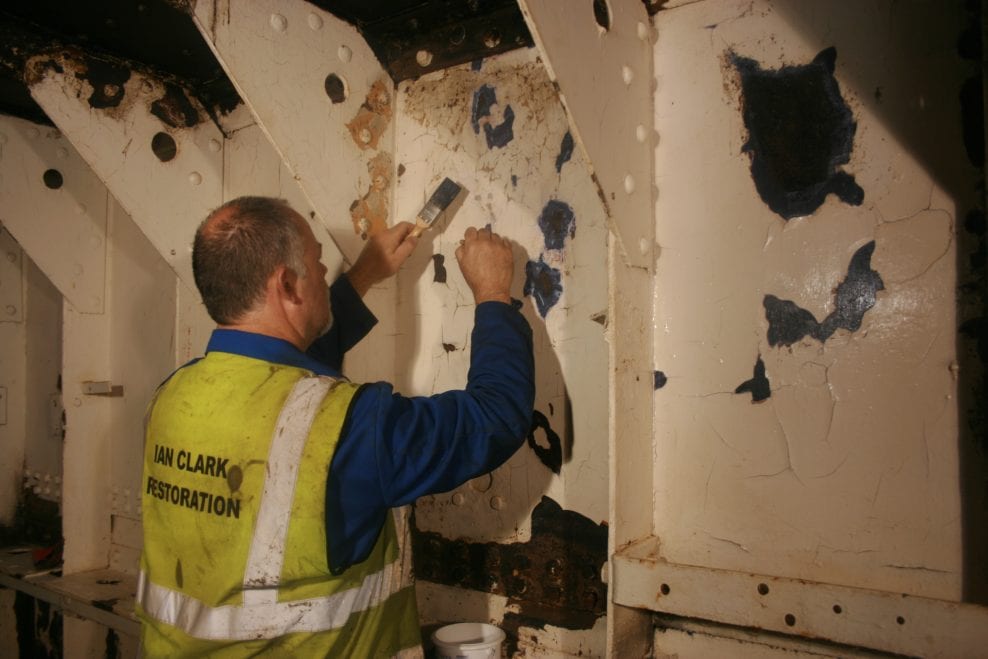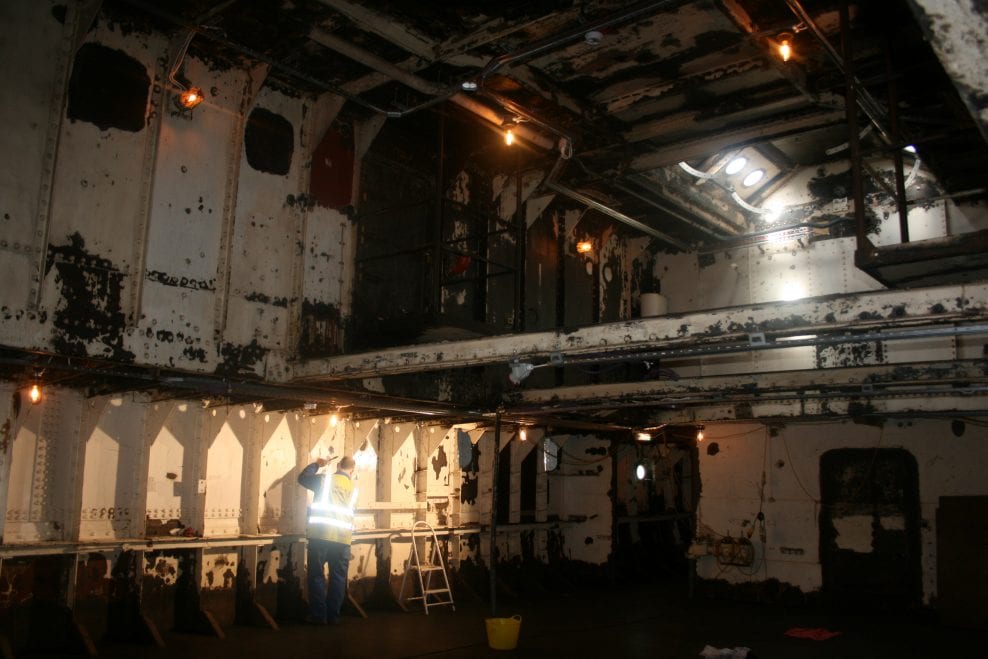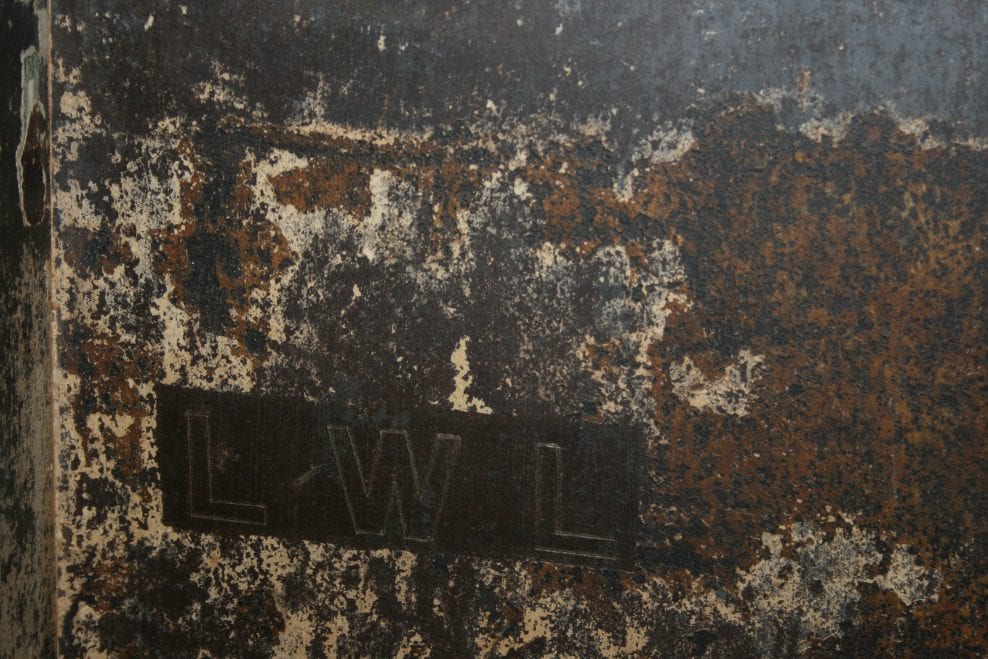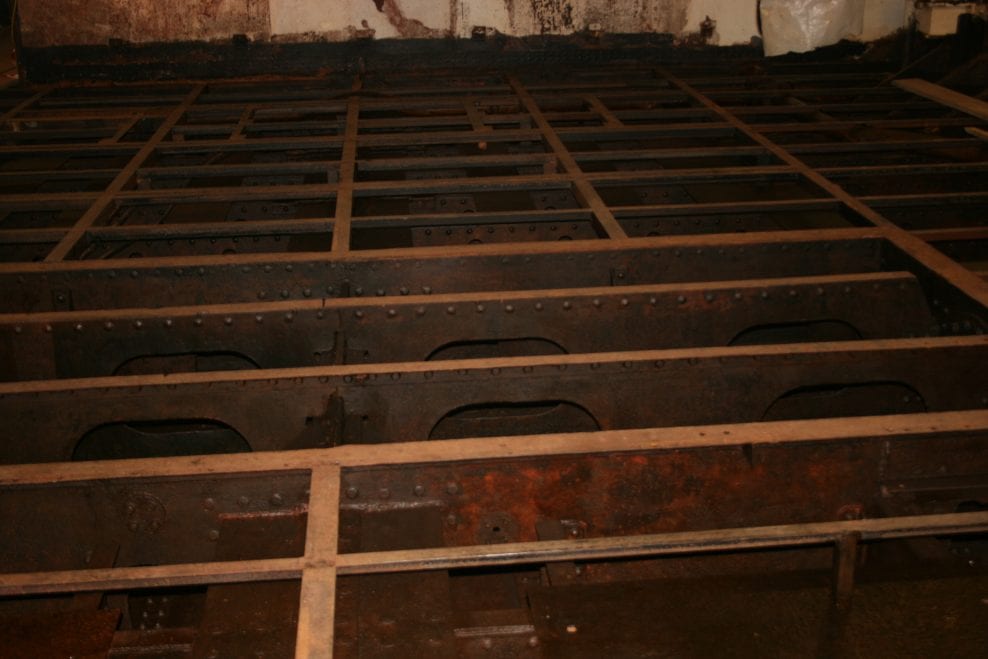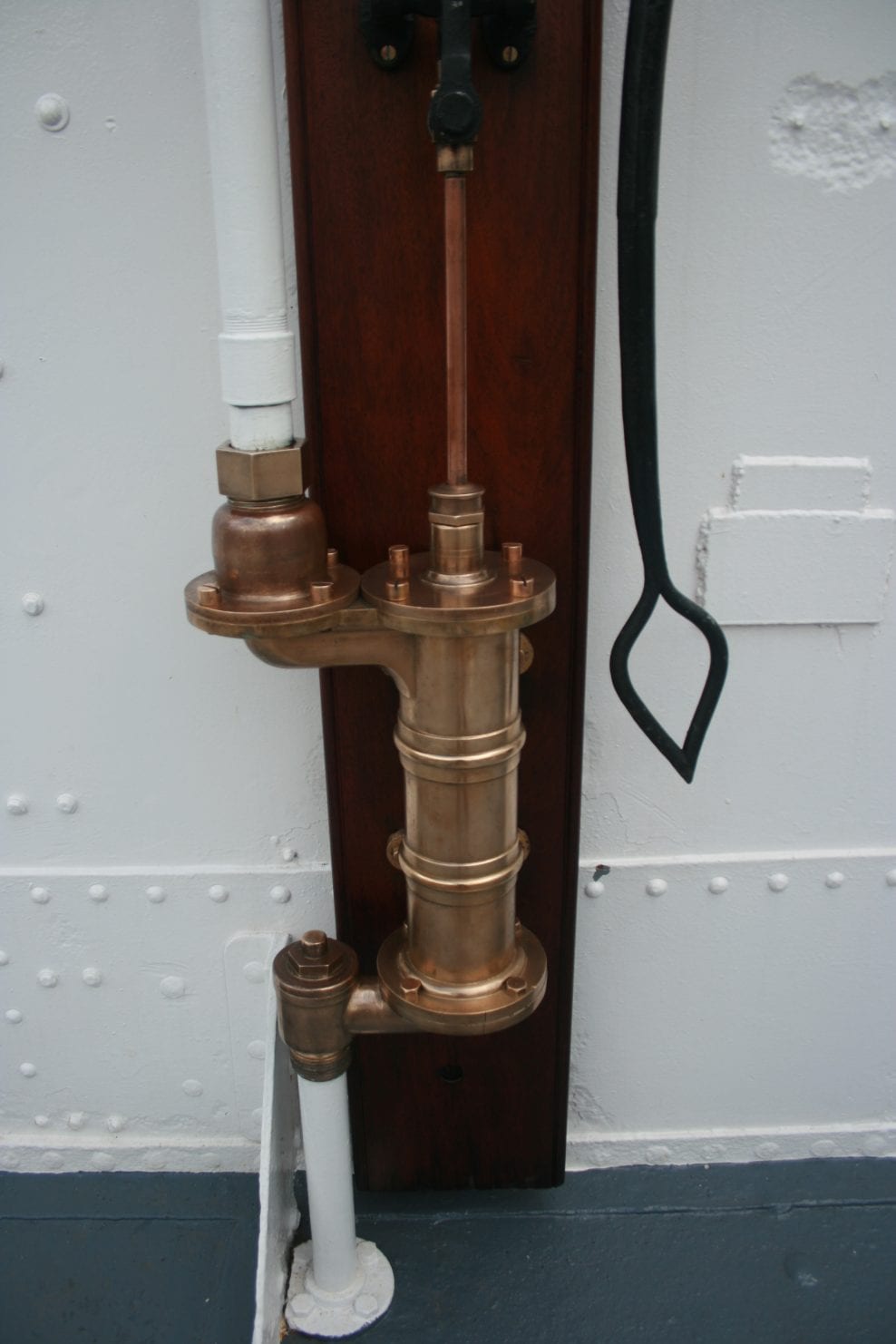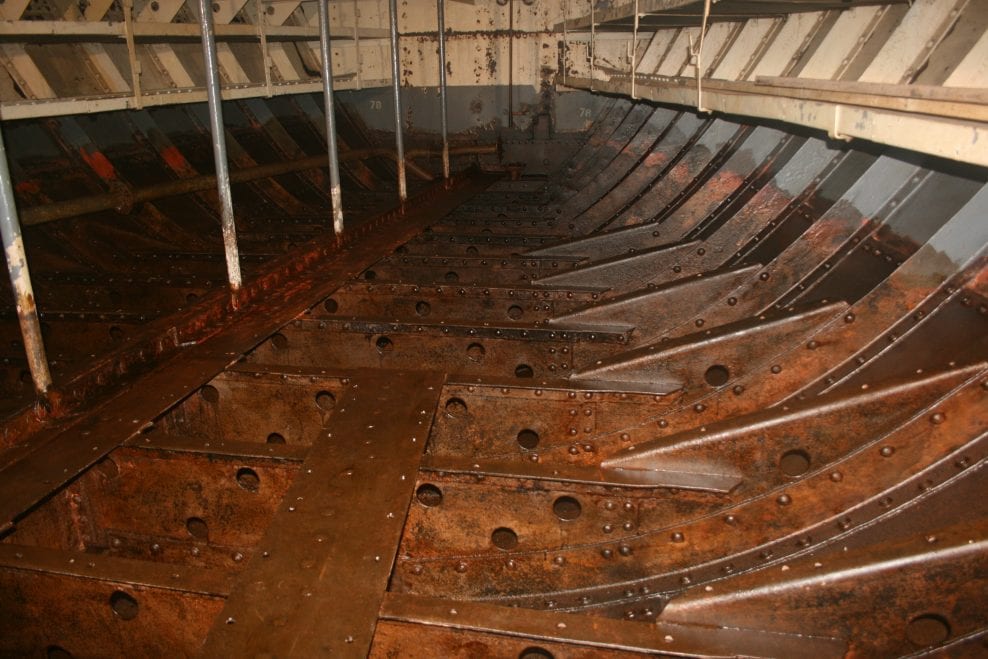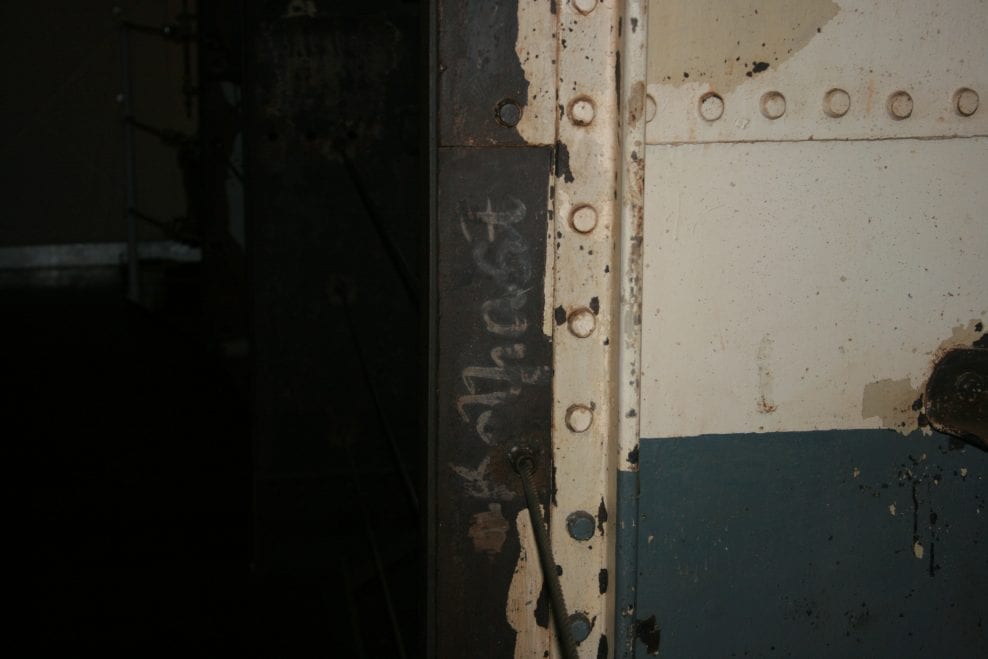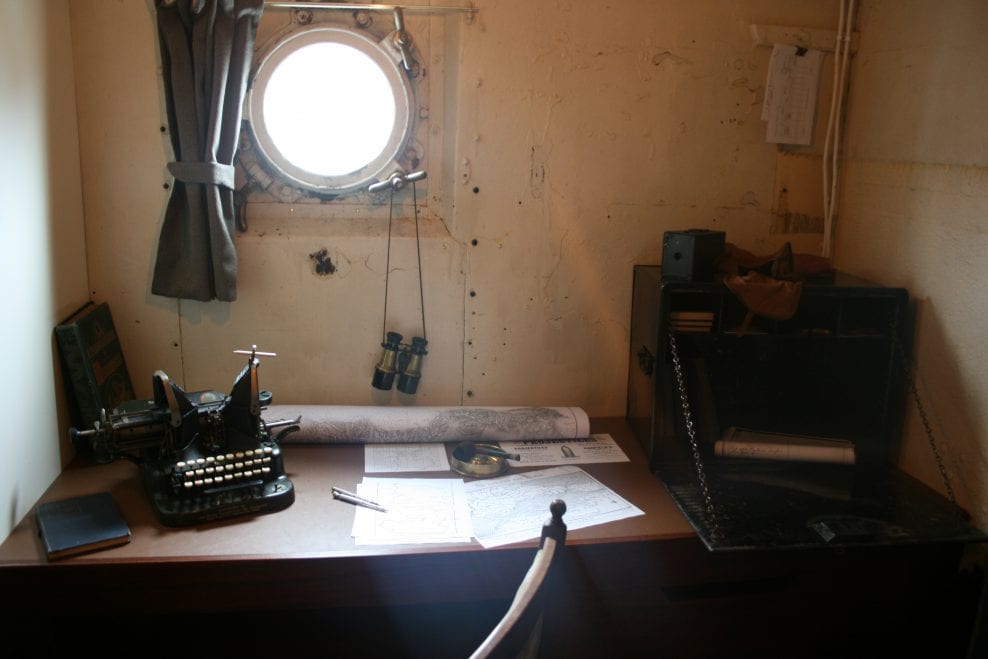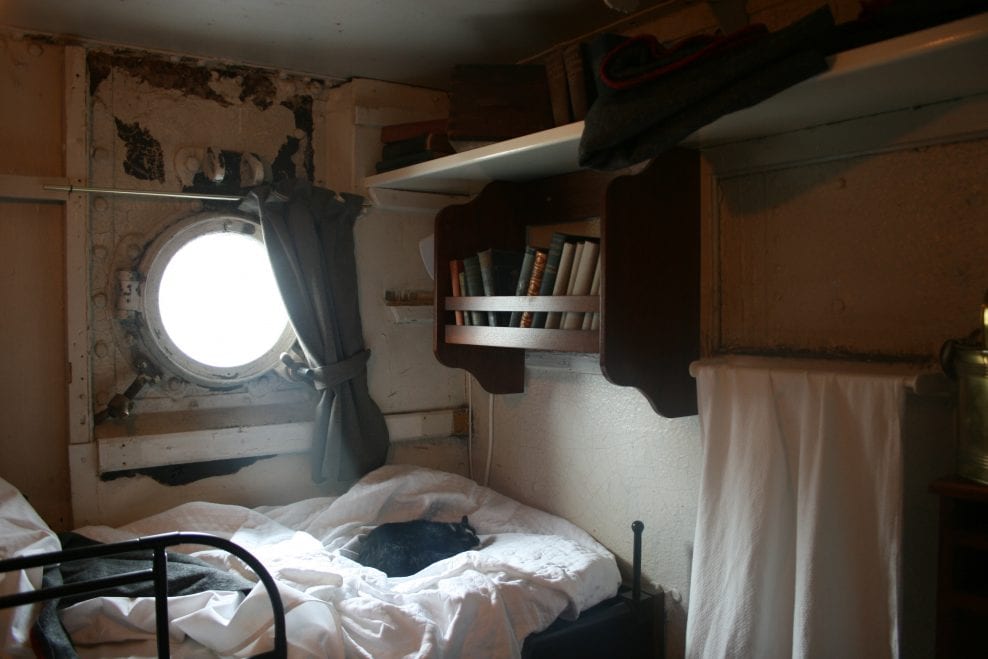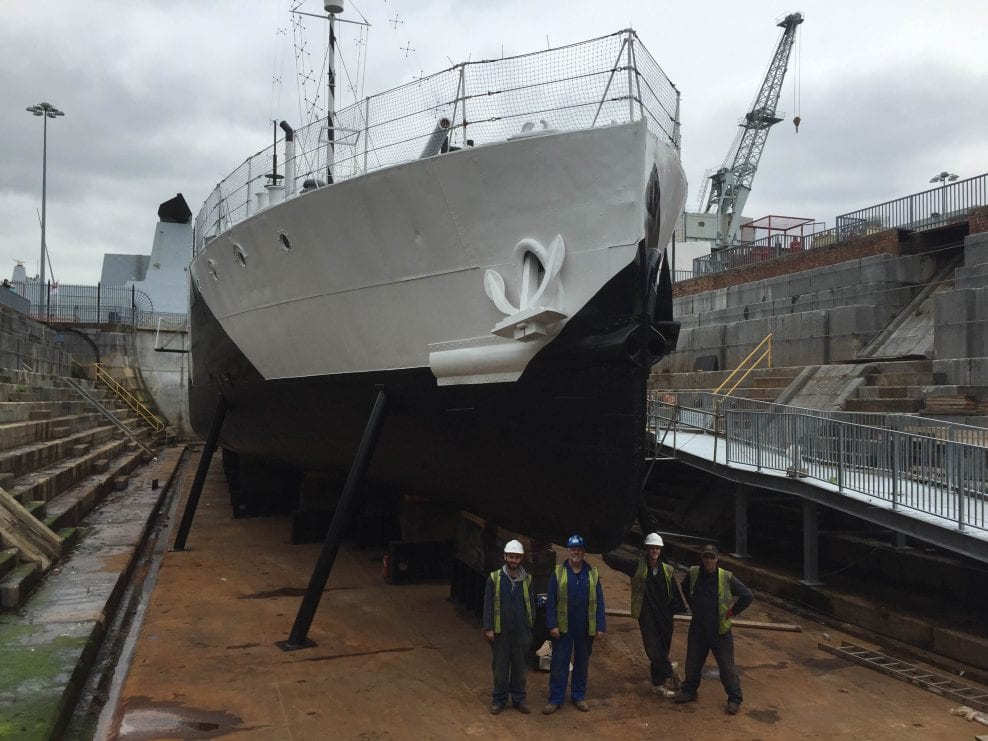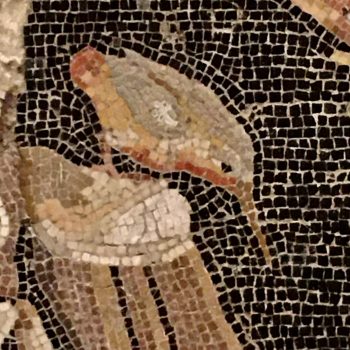Projects
HMS M33 – M29-class monitor of the Royal Navy built in 1915.
After 7 challenging months ICR successfully completed the interior conservation of this important historic ship. Working in close partnership with The National Museum of The Royal Navy and its project team, ICR endued cramped and logistically demanding conditions to deliver a bespoke low interventive conservation strategy which was ground breaking in scale and thought provoking in method.
After 7 challenging months ICR successfully completed the interior conservation of this important historic ship. Working in close partnership with The National Museum of The Royal Navy and its project team, ICR endued cramped and logistically demanding conditions to deliver a bespoke low interventive conservation strategy which was ground breaking in scale and thought provoking in method.
In temperatures ranging from +5 to +98 degrees Fahrenheit and in parallel with the ship repair and exhibition fit out contractors, the ICR conservation team worked systematically with care and sensitivity to consolidate, conserve and enhance the surviving period and more contemporary surface finishes to provide a level of conservation care not previously attempted or achieved within an UK historic ship.
Ian Clark was encouraged to build a close and focused relationship with Conservation Plus, the Project management team, to define a conservation methodology which supported and synergised with the interior design and exhibition packages so that the visitor experience would combine a pure appreciation of the cultural legacy whilst exposed to both traditional and high-tech interactive sensory landscapes.
The conservation process focused on retaining all the existing internal substrates depicting and showcasing an evolutionally story of period, use, and function from the original build of 1915 to present day.
This sensitive approach uncovered many decorative finishes and protective coatings together with some amazing “reveals” which provided significantly important contextual links to historical provenance and construction.
The overarching conservation philosophy was built around low physical intervention, material consolidation, surface enhancement and the application of wax protective coatings which were cost effective, had positive through-life capability, sustainable and reversible.
The conservation treatments throughout the ship were entirely hand applied from stem to stern and from bilge to deck head incorporating every frame, bulkhead and hull plate across a length of 177 feet (54m) by 31 feet (9.4m) beam.
The underpinning conservation ideology was designed to “lock in” the historical integrity within carefully conceived and deliverable conservation criteria which were deployed with pragmatism and cost awareness so that each internal space was conserved with a consistency and honestly equal to the interpretative storyboard.
Unlike many of the conserved historic ships in the UK, HMS M.33 does not retain a high degree of her original interior fabric therefore cannot provide the visitor with an instantly recognisable interpretive platform from which to naturally read the interior of the ship.
The M33 interior is presented with a purity which allows the visitor an immersive experience which is derived from the “stripped back” conservation philosophy and honest approach to the practical delivery.
In many instances historic ship conservation projects need to evaluate the impact and through-life worth of compartmental spatial adaptive reuse as this may provide interpretive added-value otherwise prohibited in areas which retain original machinery, logistical or life-sustaining infrastructure.
The engine/boiler room provided such an opportunity for the M.33 design and interpretation project team.
The upfront open and collegiate dialogue between the conservation, interpretive and management teams was essential when defining the visitor experience for engine and boiler room which is the largest and most exciting on-board space.
This space was to become the focal point of a digital projection Gallipoli Campaign visitor sensory experience and therefore provided the most challenging conservation phase throughout the entire project.
The digital projection was to be played out directly onto the ship’s frames, hull plating and bulkheads therefore a high-level of conservation care was required to support such a interpretive strategy.
ICR embraced this challenge by carrying out fine art conservation techniques on an industrial scale to consolidate, conserve and enhance the internal steel structures to provide exciting 3-dimensional interpretive canvasses
